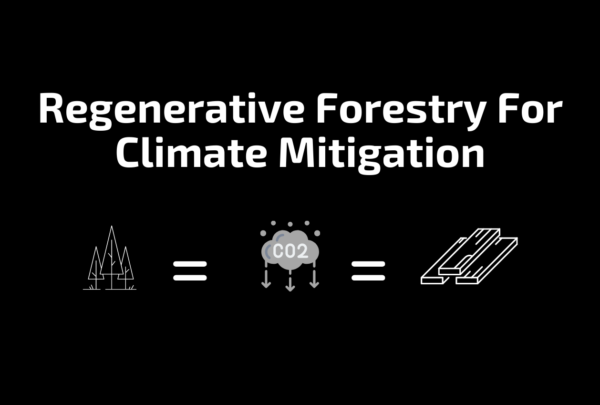“A sustainable forest management strategy aimed at maintaining or increasing forest carbon stocks, while producing an annual sustained yield of timber, fibre or energy from the forest, will generate the largest sustained mitigation benefit” – IPCC.
Often when we think of forestry, regeneration is overlooked. However, for timber to have one of the best circular economies and be the most sustainable building material available, regrowth is inevitable. Regrowth forestry’s purpose is to balance habitat and timber production in perpetuity. This article will cover the process of regrowing Victoria’s forests and give you a real-life example of a coupe that has been regenerated.
Regrowth is what the name suggests; the regrowing of a tree to replace the same specie tree that was either burnt by bushfires or sustainably harvested. By replacing what is removed, the industry is simultaneously mitigating the effects of climate change while supplying the Australian market.
In Victoria, regrowing a native forest includes preparing a suitable seed bed, a controlled burn to replicate Victoria’s Eucalypt natural process, seeding by hand or helicopter and actively monitoring to ensure the seeds are growing successfully. The seeds used are sourced from existing seed trees and local regions to match the mix of species that existed prior.
A coupe is a section of land that has been allocated for sustainable harvesting. Native forests cover approximately 7.8 million hectares of Victoria, with more than 90% protected in reserves, National Parks or unsuitable for harvesting. What makes a coupe particularly important is that there are state laws in place to ensure timber is harvested with a sustainable approach, including the regrowing of all areas.
Coupes are first identified by a computer-based assessment to review forest management zones, identified threatened flora and fauna habitat, water, cultural sites, forest types and any environmental features. A field assessment is then conducted to record any other relevant aspects.
For more information about coupe identification, see this fact sheet.
It is a misconception that forests do not grow back. Pictured below on the left is a coupe sustainably harvested in 1997, and on the right shows the same coupe in 2021 (24 years later) after reseeding has taken place.

As you can see, Victoria’s native forests are extremely resilient and regenerative. Timber, like Eucalyptus, is the best possible building material available due to this unique resurgence.
It is widely known that trees store carbon for life. A well-managed harvested forest means that society can benefit from using a product that uses less energy to produce (timber) while continuing to remove carbon from the atmosphere.

The more forests we grow for timber, the more carbon we can sequester. Importantly, if planted as a biodiverse forest, increasing forest cover for timber production can also increase potential habitat and reduce the impacts of catastrophic bushfire on our indigenous wildlife.
Regrowth native forests are hardwood species which means 100% of the logs can be put to use, further emphasising a no waste industry. Each tree is broken down into three sections, high quality timber, structural grade timber and residual timber.
High quality timber is what we use here at ASH for everyday household applications such as furniture, staircase components, joinery, flooring, lining, windows and doors, benchtops, and veneer. High quality hardwood is even seen in mid-rise buildings through mass timber construction.
Structural grade timber is used to build Australian homes, perfect for framing and trusses. Residual grade timber is often used for firewood, paper products and as a clean energy source.
Native, regenerative forests are our best chance at mitigating the effects of climate change while responding to Australia’s expanding population and infrastructure. We are all on this climate change journey together and are working towards a cleaner, greener future, which is why native forestry must be prioritised before it is too late.
"*" indicates required fields
